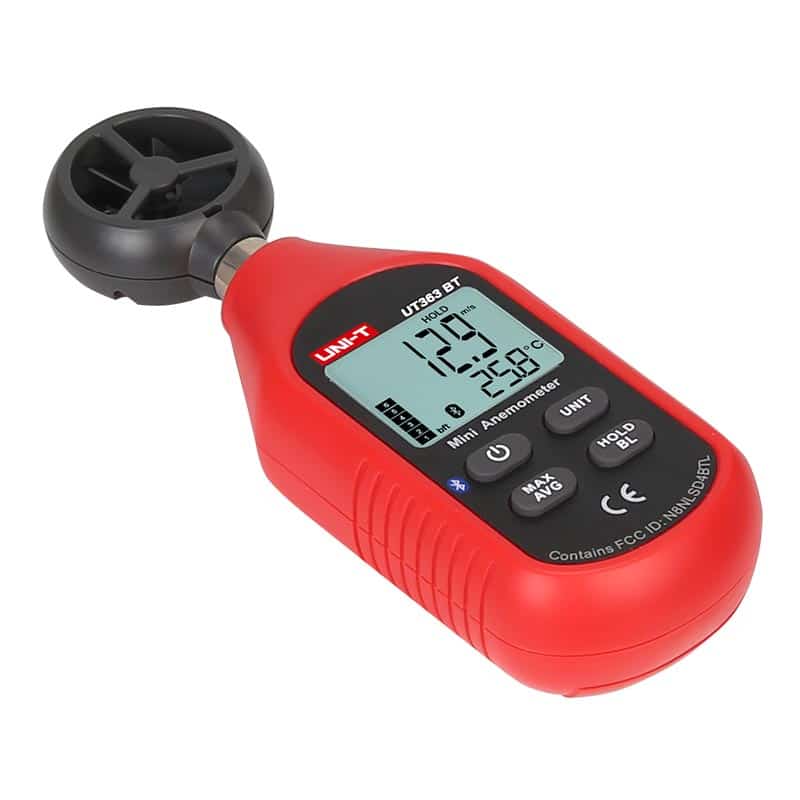Picking the Right Anemometer: A Comprehensive Buying Guide
Picking the Right Anemometer: A Comprehensive Buying Guide
Blog Article
Anemometers Introduced: Recognizing Their Value in Environmental Monitoring and Precaution
The function of anemometers in environmental surveillance and safety and security actions is often underestimated, yet their value is indisputable. From weather forecasting to aeronautics safety, anemometers play a critical duty in providing accurate data that informs decision-making procedures and boosts overall safety and security.
Background of Anemometers
The development of anemometers can be traced back to the ancient people where basic wind gauging tools were first used. One of the earliest known anemometers was the hemispherical mug anemometer developed by Leon Battista Alberti in the 15th century.
In the 18th century, the popular scientist John Thomas Romney Robinson introduced the Robinson anemometer, which featured four hemispherical cups installed on horizontal arms that extended from a main axis. This style came to be a requirement in atmospheric measurements as a result of its precision and integrity. Over the years, improvements in innovation brought about the development of even more contemporary anemometers, consisting of ultrasonic anemometers and laser Doppler anemometers, supplying increased precision and effectiveness in measuring wind rate and direction. The background of anemometers showcases an amazing trip of technology and development in the area of weather forecasting.
Sorts Of Anemometers
Throughout the field of meteorology, numerous kinds of anemometers have been created to accurately measure wind rate and direction. Sonic anemometers make use of ultrasonic signals to determine wind rate and instructions precisely. Hot-wire anemometers run based on the concept that the cooling result of wind on a heated wire is symmetrical to the wind rate.
Applications in Weather Forecasting
Having discussed the numerous types of anemometers used in weather forecasting for measuring wind rate and instructions, it is vital to discover their functional applications in the field. Anemometers play a vital function in weather forecasting by supplying real-time and exact data on wind conditions (anemometer). Meteorologists make use of anemometers to keep an eye on wind rate and instructions to forecast weather condition patterns, issue cautions for extreme climate events like twisters, storms, and storms, and analyze weather for air travel security
In meteorology, anemometers aid in understanding neighborhood and regional wind patterns, which are essential for anticipating weather condition adjustments and determining climatic fads. These devices are likewise made use of in research study to research microclimates, urban warm islands, and air contamination dispersion. Additionally, anemometers are utilized in farming to maximize plant monitoring methods, such as watering and chemical application, based on wind problems.
Relevance in Aviation Safety And Security
An important facet of making sure aeronautics safety and security lies in the meticulous tracking of wind problems making use of anemometers. Anemometers play an important duty in aeronautics by giving real-time information on wind speed and direction, helping pilots in making educated decisions throughout liftoff, flight, and touchdown. Unforeseeable and strong winds can dramatically influence airplane operations, making it vital for air travel authorities to rely upon accurate wind dimensions to make certain the security of passengers and crew.

In the vibrant setting of air travel, where even small adjustments in wind speed and instructions can have profound impacts, anemometers stand as indispensable tools for advertising safe and secure visit our website flight.
Role in Environmental Research
Anemometers play a crucial function in environmental research study by offering necessary data on wind speed and direction. By accurately gauging wind attributes, anemometers help scientists analyze the activity of contaminants in the air, analyze the effect of commercial emissions, and predict the spread of contaminants in the setting.


Conclusion
In verdict, anemometers have played a vital role in environmental surveillance and safety actions. With a rich background and different kinds offered, these gadgets have actually been commonly used in weather forecasting, aviation safety and security, and environmental research study. Comprehending the importance of anemometers is important for precisely gauging wind rate and direction, which is essential for anticipating climate patterns, making certain secure aviation operations, and performing environmental researches - anemometer. Their contributions to these fields can not be underestimated.
One of the earliest known anemometers was the hemispherical mug anemometer invented by Leon Battista Alberti he said in the 15th century. Over the years, improvements in technology led to the growth of even more contemporary anemometers, consisting of ultrasonic anemometers and laser Doppler anemometers, offering boosted accuracy and efficiency in determining wind speed and direction. Hot-wire anemometers operate based on the principle that the cooling effect of wind on a warmed wire is proportional to the wind rate. Meteorologists utilize anemometers to keep an eye on wind rate and instructions to anticipate weather patterns, problem warnings for serious climate occasions like tornados, tornadoes, and hurricanes, and analyze atmospheric problems for aeronautics safety.
Understanding the significance of anemometers is vital for precisely gauging wind rate and direction, which is crucial for anticipating weather patterns, ensuring safe aviation operations, and conducting environmental studies. (anemometer)
Report this page